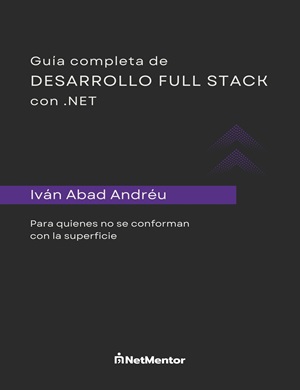In the winter of 2021, Microsoft released Age of Empires 4 and of course, as a fan of the saga, I wanted to play it. The problem? Out of the box, the game required 130 GB and my laptop didn't have enough space since I was storing all of the channel’s edited videos on it.
So I had to find a solution and that was to build a server.
1 - Set up a home server with an old PC
The process was simple and pretty affordable. What I did was use a computer I already had at home and wasn't using.
My original idea was not just to use it as a server, but also to play games on it or install some apps. However, this didn’t really work out since there was way too much lag.
To utilize it, I bought two 2TB hard drives to have them in RAID with fault tolerance. I still have the same ones today, but for the next Black Friday or upcoming sales I plan to upgrade, maybe to 8TB or 12TB drives, probably the 12TB ones.
The ones I bought were the Western Digital Red Plus.
And then I got two adapters to be able to install the drives inside the tower.
They fit perfectly.
Although recently I was gifted the Synology DS420+, which is my current server.
1.1 - Operating system for a home server
Once you have the physical machine, you need to set up some software. To be honest, it'll work with Linux, Mac, or Windows, my first home server ran with Windows, just with the extra disks installed and that was it. There's really not much more to it.
But if you want to take it a step further, there are Linux distributions designed for this, like TrueNas.
As I mentioned earlier, I originally used Windows, and now with the Synology it has its own Linux distribution. Personally, if I had to start over from scratch, I'd go with Linux instead of the Windows that came pre-installed.
1.2 - Hardware requirements for a home server
Everything depends on what you'll use it for, but generally the applications don’t require a lot of resources.
If you have Windows, Mac, or another operating system not intended for servers, you’ll need more resources; but if you use a specific one, 2GB of RAM and a dual-core processor is more than enough.
Personally, my Synology has 2GB RAM and a dual-core CPU, and with all the applications I mention in the next section, I use just over 1GB of RAM and the CPU rarely exceeds 10%, only reaching 20% when playing media via Plex.
If you want a game server with hundreds of users connected, then you'll probably need something a bit more powerful.
1.3 - Synology vs. Old Tower
I went from using an old tower as my server to having a Synology, and both options have their pros and cons. You have to find the one that best fits your situation.
For me, noise and size matter. The Synology is much quieter than the tower and, of course, it's much smaller compared to a full-sized tower case.
As for price, the Synology is quite expensive, around 400 euros, but it only seems expensive if you don’t already have an old tower to use as a server. If you’re going to buy the case, processor, RAM, etc., the price is very comparable.
Note: If you’re using an old PC, make sure you have a good network card.
On the other hand, if you need a very powerful machine, having a tower is a much better option, as you can expand it or swap out parts if they become outdated. For what I use it for, the Synology DS420+ is more than enough.
2 - Uses for a home server
Now I want to get into the data on what I use the server for. I use applications on it that I run via Docker (with docker-compose). You can find this file in this GitHub repository, give it a star ⭐.
2.1 - File server
The main use I give it is as a file server.
I store all the videos and channel information, as well as personal photos and other documents like invoices, etc.
To access the files I've tried several methods, both Nextcloud and FileBrowser that basically act as cloud systems on your own server, and are used to replace Google Drive, especially NextCloud. But personally, that’s not what I need, as the only users are myself and my girlfriend.
For us, it's much better to access the files through the network address from the file explorer, so it acts just like a normal network folder.
To have a pleasant way to view photos, if you have a Synology, there's an app for that, but if you don't, you'll need to install one of the aforementioned apps.
2.2 - Home media server
The second use I give it is as a media server. Even though I still pay for Netflix, HBO, Prime, etc., not everything I want is available there, so every now and then I have to get that content some other way.
Of course, totally legally.
The first thing we need for a media server is an app that plays media;
I've personally tried Plex, Emby, Jellyfin, and even the one that comes pre-installed on Synology, and my favorite is Plex, since it works best on Synology (doesn’t stress the CPU) and Jellyfin sometimes crashed, which isn’t the worst, but can be annoying.
If you have a Synology, the best option (in my opinion) is Plex, since you don’t need Docker and it has its own 100% compatible version in the Synology store, which makes it work even better.
However, it’s not cheap, it’s a 5 euro/month subscription or a lifetime for 120, but only needed for the mobile version.
Besides the app itself, you need to get the actual content, for which I have many of the -arr apps set up, such as Prowlarr, Sonarr, Radar, and Readarr together with Transmission for torrents.
2.3 - Password manager on a private server
It's important that you don't reuse the same password across different sites, but it's just as important not to store your passwords in your browser, since if you get a virus, they'll have access to all of them.
I personally use Vaultwarden (Bitwarden). I know there are others, or you can even use Vault. But Bitwarden has a browser extension, which Vault doesn’t.
If you don’t want to install a password manager on your own server, I recommend using a cloud one like NordPass. But please, don’t store passwords in your browser.
- Note: There will be a specific post about password managers.
2.4 - DNS server & blocker for trackers with Pi-hole
For this feature, I use Pi-hole. While Pi-hole is mainly for blocking ads on websites, for me ads aren’t too annoying (unless they're super intrusive), but what really bothers me are trackers.
For this, there’s a website called Firebog, where you can get blocklists for whatever you want to block.
Then you have to point your machine or router to the IP address of your server so traffic goes through Pi-hole before reaching the internet.
- Note: There’ll be a post about what you can do with Pi-hole.
2.5 - What else can you do with a home server?
In addition to what I've mentioned above, you can also do other cool things with your home server, like hosting your own website, which can help you learn or serve as a lab until you launch it on a VPS.
In the future, my plan is to control the security of my home, like adding exterior cameras and having everything synced automatically to the cloud if something happens.
If you’re into gaming, you can also set up a server for whatever game you’re hooked on at the moment.

